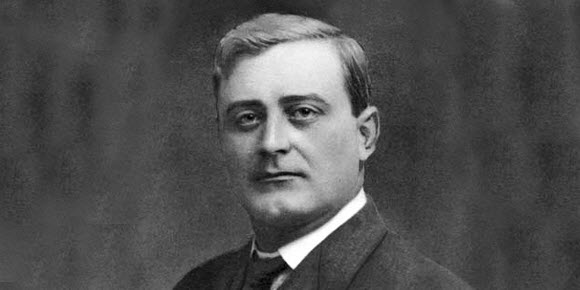by Bruce Cherney (part 2)
The Winnipeg Tribune on January 25, 1912, related the story of a well-dressed individual on his way to take part in the Minitonas gold rush. He mysteriously disembarked at an unnamed railway siding and then hopped back onto the train as it restarted, shouting, “Ha! Ha! I’ve beat you fellows to it. I’ve got my stakes already.”
The article stated that the man’s idea was that whoever shoved his stakes in the ground, regardless of location, would be scooping up nuggets.
Bob MacGregor, an old Klondike miner aboard the train, told the man that his stakes were no good. “They’ve got to be wood stakes, so wide and so long.”
Everyone on the train laughed, since the stakes were made of iron and obtained from a wayside blacksmith shop.
In other instances, men ventured out in the dead of night for fear that their so-called mining operations might be under observation during daylight hours and claim jumpers were waiting for darkness to perform their nefarious deeds. In effect, paranoia was setting in as the quest for gold intensified.
“East, west, south and north, the land is staked. Every farm is cut up into claims. On Thursday (the report was in the Saturday edition of the Tribune) morning, the west branch of the Favell creek (today’s Favel River) was an unbroken stretch of snow, without any sign of a stake on it.”
The later statement was an indication that the gold rush was taking place during the midst of a typically harsh Manitoba winter. Many hoping to strike it rich were ill-equipped to cope with the bitter cold and deep snow.
A January 27 report carried across the nation stated that conditions in Minitonas were “terrible.”
“There is no food in the little village ... There is much suffering, as hundreds are rushing in unprepared for cold weather and local conditions.”
U.S. Consul General John E. Jones wrote that Minitonas was so crowded that “people are living in tents and suffering much privation because of the severity of the weather.”
It was reported that the only ones prepared for the winter were “old miners,” who had previously braved adverse weather in the Klondike.
A special report in the January 26, Brandon Sun claimed that 100 prospectors from scattered points in the U.S. and Canada had arrived in Minitonas the day before and another 300 were expected the following day.
“The private car of R. (Roderick) J. McKenzie (Mackenzie is the usual spelling of his name), of the C.N.R. (Canadian Northern Railway, today’s Canadian National), is here, with his mining experts from California and several others.”
In addition to being in charge of construction for the railway, Mackenzie was the owner of the Deer Lodge
Hotel and the Kirkfield Park Race Track in Winnipeg, and was one of 19 millionaires residing in the city named in 1910 by the Winnipeg Telegram.
Mackenzie and his miners arrived at the scene of the action “with the necessary equipment.”
The Free Press on January 29 asserted that there was only about a dozen qualified miners prospecting for gold in the district. “This is evidenced by the scarcity of test shafts sunk and the fact that the experienced men are being besieged by locators anxious to learn how to test the gravel when they have obtained it.
“With all public buildings full and men lying like cardines (a typo, should be sardines), the excitement and crowds are increasing every hour. Already the Americans, enterprising as usual, have joined the rush.”
Among the Americans was Robert A. Long, a businessman from North Dakota, who had left his family behind in the quest for the shiny, yellow-coloured metal, which was typical of so many who got the gold fever bug.
“Whether Minitonas is a gold field, or not, the rush is real and (in) earnest.”
According to the January 26 Tribune, there was some doubt in Sifton and Dauphin that Minitonas would become the “Manitoba Klondike,” but there was still a rush for the gold from the railway stations in the two communities. Dauphin was the last major town of the Canadian Nothern Railway branch line to Minitonas, while Sifton was some 30 kilometres north of Dauphin on the same branch line.
As the train pulled out of the Dauphin station, a dozen local residents put aside their doubts and headed to Minitonas, joining the throng already aboard.
In Sifton, 200 would-be miners roused the restaurant cooks, clamouring for breakfast before boarding the Minitonas train that was leaving in half an hour.
“In fifteen minutes the town faced a famine in ham and eggs and other breakfast necessities,” according to the Tribune.
Winnipeg businessmen heading for the gold fields were said to be unrecognizable, since they were not wearing their suits. They were clad in “quaint garb ... With Moccasins, heavy woolen socks, flannel shirts, toques, etc., with here and there a handsome suitcase dangling incongruously at their side, they presented a picturesque and unusual spectacle in the dim dawn.”
The January 26 Free Press reported that hundreds had to be cared for by private residents, since all public accommodations in Minitonas were filled to overflowing.
The Brandon Daily Sun on January 25 claimed that the Minitonas
Hotel (more of a boardinghouse than hotel) was turning away 100 people a day.
“The area of the gold field is increasing by leaps and bounds beyond all expectations. Gold has now been found at different places in the valley for a stretch of twenty miles from east to west and six miles from south to north, and the area is increasing daily.”
(Next week: part 3)
Part 1 here



